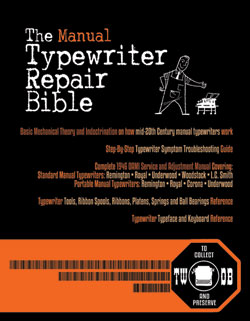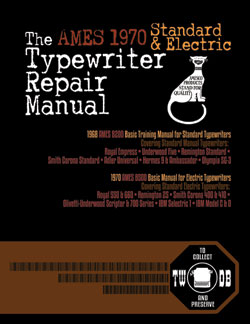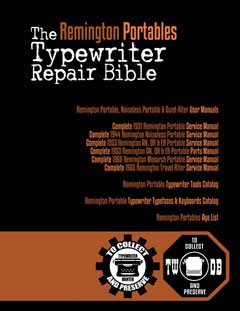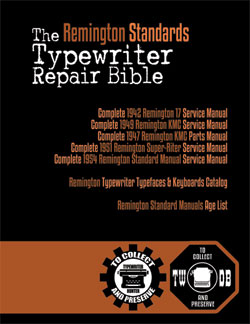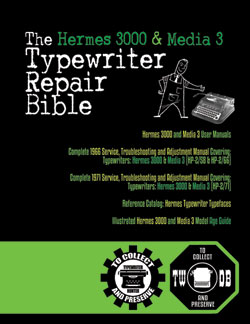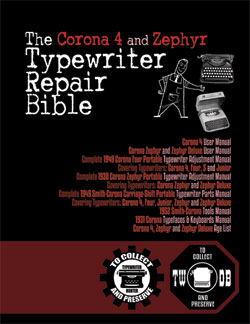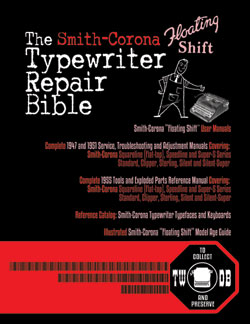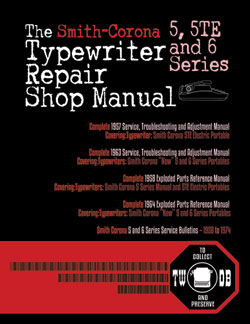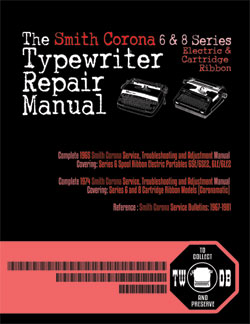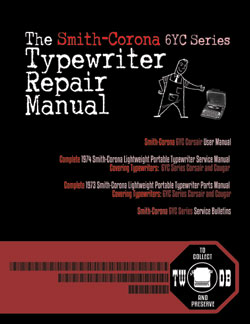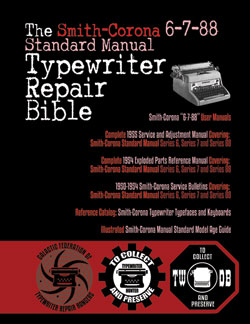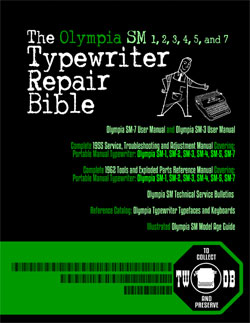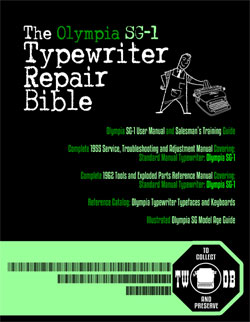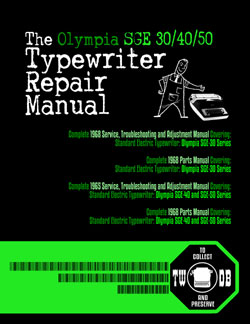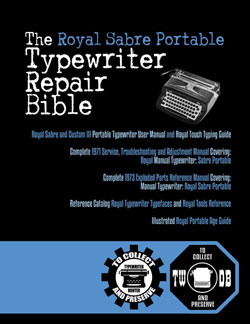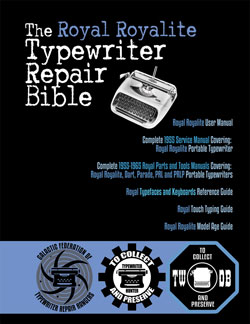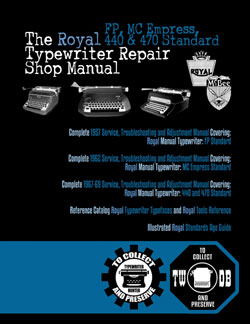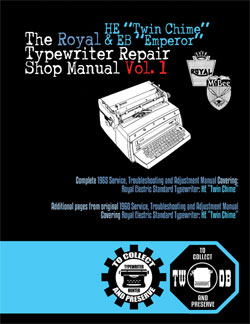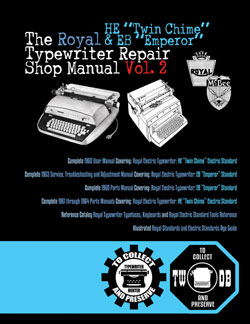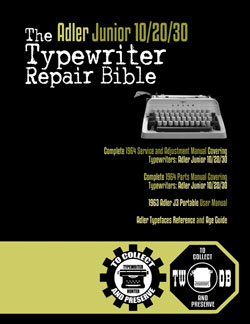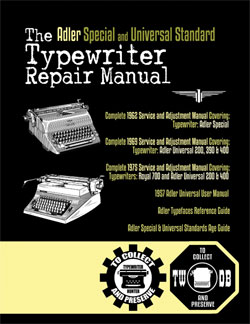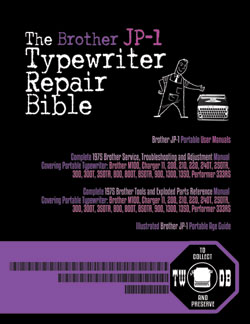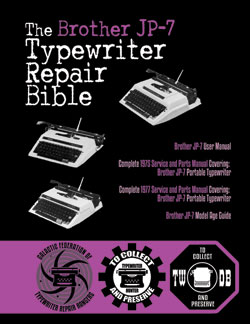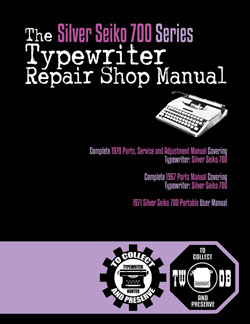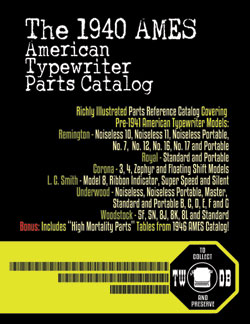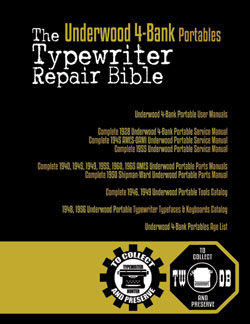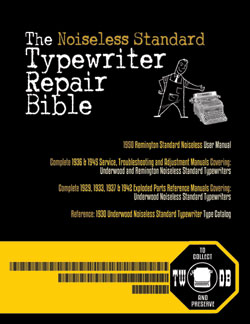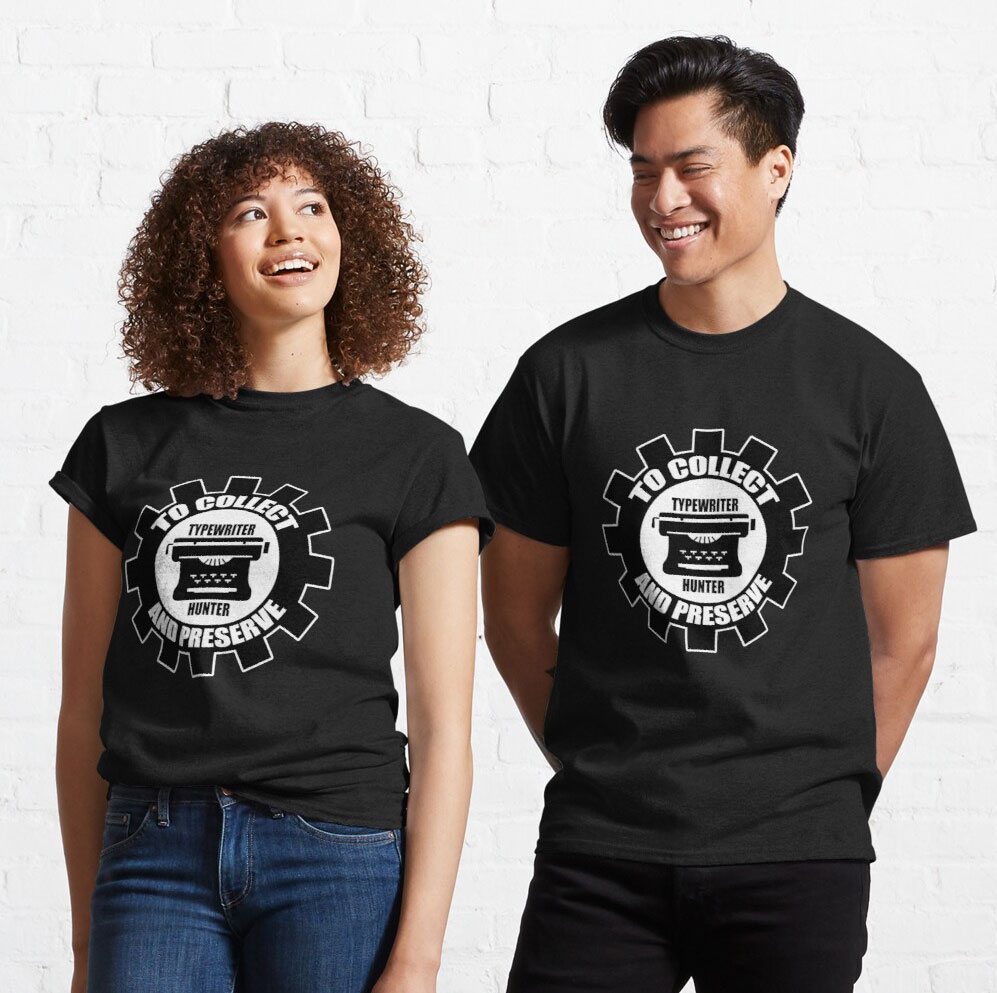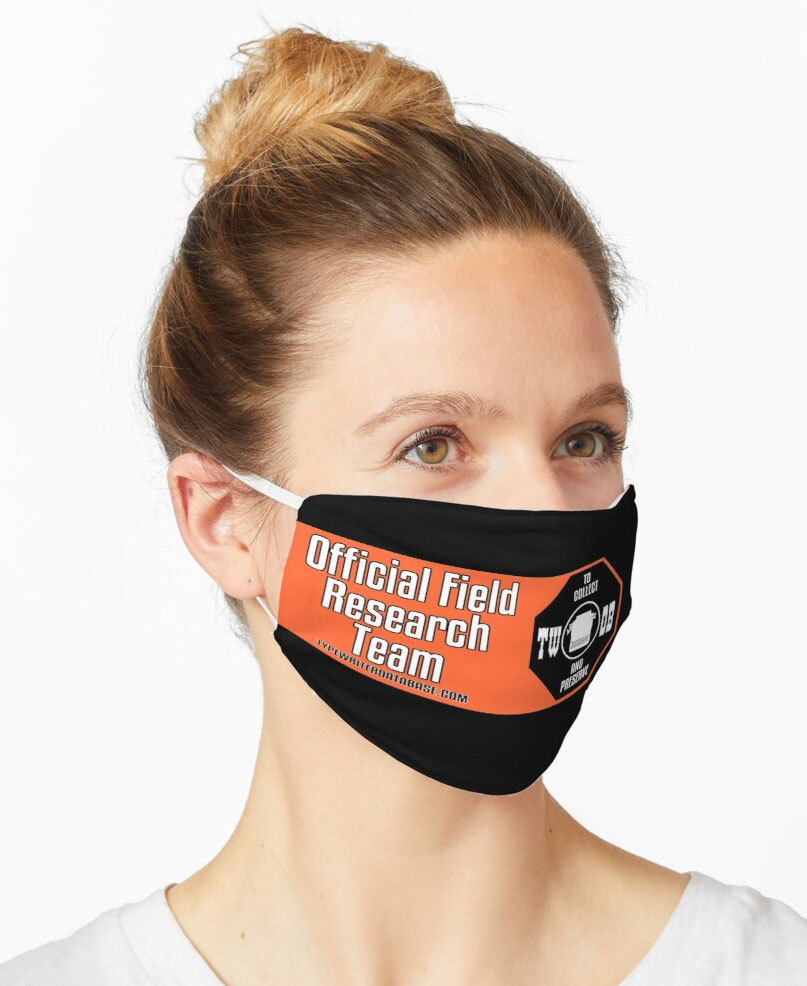1950 Remington All-New #AT1997444
Status: My Collection
Hunter: Chris Aldrich (chrisaldrich)
Created: 05-26-2024 at 11:02PM
Last Edit: 09-07-2024 at 10:17AM
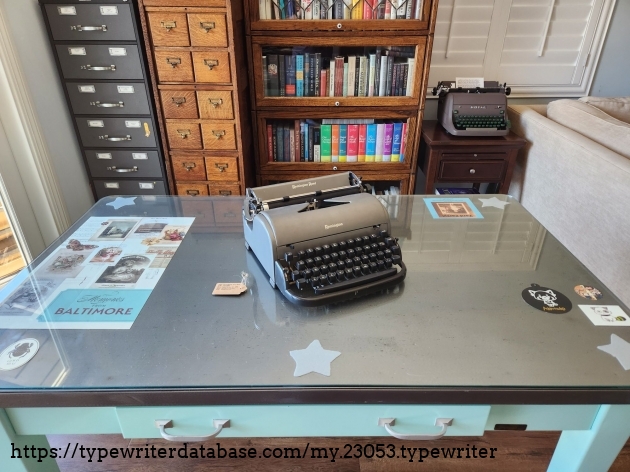
Description:
The Remington All-New wasn't on my typewriter collection list until I ran across it randomly in the typewriter database where I fell in love with some of the photos. Then only days later, I had the opportunity to pick one up out of New Mexico for a terrifically under-valued $21. I'm currently in the midst of cleaning it up a bit, but this may be one of the most beautiful machines I've ever seen. Given the similarities to the Remington Quiet-Riter, which I already enjoy, it was a no-brainer acquisition. I don't think I could have designed a typewriter to pair with my McDowell & Craig Executive Tanker desk if I had tried.
Design
The Remington All-New sits in the cusp between the shiny black typewriters of the 1940s and the industrial crinkle-painted 1950s and 60s portable American machines. The sleek gunmetal gray and curving lines are just stunning to me.
The rounded hood of the machine reminds me of the streamlined silhouette of Henry Dreyfuss' 1936 design of New York Central Railroad's streamlined Mercury train. This is underlined as I also own a boxy 1949 Henry Dreyfuss-designed Royal Quiet De Luxe which was first released in 1948.
Given that Remington only manufactured this typewriter from 1949 into 1952 before releasing the very popular and ubiquitous Remington Quiet-Riter in 1950, and the similar but somewhat less ubiquitous Letter-Riter and Office-Riter models which all ran into the early 1960s, it seems like the shifts in the model over the first year (1949-1950) were a live engineering test for these later models. There are lots of subtle little changes in all the documented models of the All-New over the first year including in the cases. My particular model has an interesting tin-y sound on occasion and has old cream-colored masking tape on all the internal metal panels and one black taped section on the hood. Some of the versions I see in the typewriter database have two black patches of tape, presumably for some level of soundproofing. Later models of the All-New go from flat paint to the ubiquitous crinkle paint of typewriters in the '50s and '60s. This makes me wonder if engineers discovered that this particular thick paint treatment helped to dampen the sound of these typewriters in addition to the felt which was often glued into the ribbon cover portions of most typewriters in this time frame.
Overall condition
My particular typewriter is in great exterior condition with respect to those I've seen in the database. There are certainly some scrapes and scuffs, but these are also easier to see on flat painted metal. The case certainly has seen better days.
The serial number AT-1997444 places the manufacture in February of 1950 based on data from the typewriter database. The "T" in the "AT" portion of the serial number indicates that the machine includes a tabulator, which not all of this line did. This means that next February 2025, my machine will celebrate it's 75th (or diamond) birthday.
Mine didn't come with one, but the closest manual for this model that I can find is a 1951 version of the Remington Quiet-Riter.
Mine came with only one original Remington ribbon core (ring) and one ribbon cover. The matching set were missing, but a prior enterprising owner had tied the (now dried) black ribbon into the auto-reverse mechanism on the left hand side to jury-rig the ribbon set up. Fortunately I have an extra spool sitting around, though I've opted to use a plastic universal spool with a removable core to be able to properly spool up new ribbon (blue/green bichrome) onto it.
The machine internally was in broadly good shape, but needed some cleaning. The segment and typebars required two rounds of treatment with mineral spirits to get the sticky keys working properly. It wasn't nearly as dusty as other machines I've gotten with similar vintage.
I'm still not quite sure what to do with the white masking tape on all the internal portions of the machine's panels, so I'm leaving them at present. Given their placement (everywhere!), I'm reasonably sure that they were all put on in the factory.
In taking apart the carriage to give it and the platen and rollers a good inspection and cleaning, I noticed the variable line spacer was a bit sticky, so I cleaned the mechanism out and lubricated it a bit before putting it all back together.
The bichrome lever is missing its original gray plastic finger cap, something that seems somewhat common in the All-New. Perhaps I can swap with one from the margin sliders which are hiding underneath the paper table?
The type and alignment were all in good order, so I didn't need to effect any changes there.
I'm terribly tempted to strip and refinish the exterior shell just for fun, but it's in such good condition, I'll let it slide for the moment. It seems like a great machine to potentially plate with chrome (or silver, gold, or even platinum). I'm also half tempted to do a dark matte blue similar to the sort of scheme I've seen on some cars recently (Tesla comes to mind).
The case is in far worse condition and crying out for restoration of some sort. More on that below.
Keys
The 1950 Remington All-New typewriter has 50 hefty gray keys with doubleshot plastic so that light yellow plastic indicates the key functions. There are both left and right shift keys as well as shift locks. The margin release (labeled "M.R.) is on the top right and the backspace (labeled with a right facing arrow) is on the top left. There is also a right side Tab key opposite the tab set/clear lever which is on the far left side of the keyboard. The right side also has a select lever with labeled 1, 2, and 3 settings for the key pressure control. The spacebar runs the full length of the bottom row of ten keys.
Other Functionality
The carriage has both left and right release levers. There's a variable line spacer button in the center of the left platen knob and a related line locating lever for making it easier to do sub and super-script while keeping the line spacing the same. There's a switch for single and double spacing. The carriage also has a traditional paper bail with two rubber rollers. The typing point includes a permanent card finger on the right hand side. The ribbon vibrator has two vertical posts with metal pivots which trap the ribbon in what is Remington's quick ribbon changer set up (one of the easiest methods of changing ribbon I've seen).
There's a tabulator included with a tab key on the right side of the keyboard and a switch on the left hand side of the keyboard for easily setting or clearing tabs. These work like the later "Miracle Tabs" of later Remingtons, but this model isn't labeled with that feature name. Margin stops are manually set with sliders hiding underneath the paper table. Sadly there's a small metal tab in the middle of the carriage rail which prevents the setting of margins all on the right or the left, which becomes an issue when attempting to set both margins on the right hand side with index cards in vertical orientation. This can be remedied by centering any paper in the middle of the platen for margin settings.
There are shift keys on both the left and right as well as shift locks on both sides as well. The machine has a segment shift to decrease finger fatigue. It's not as light as some of my Royals or Smith-Coronas, but it may improve a bit with some cleaning.
The All-New has the traditional Remington portable auto-reverse ribbon switches from the mid-century in addition to a manual switch on the front left side between the hood and the keyboard. Opposite this is the traditional blue/white/red switch for the bichrome and stencil settings. A labeled (1, 2, 3) variable touch setting lever is also to be found on the right side of the keyboard. It seems to be attached properly and functioning on my machine.
The ribbon cover/hood is hinged on both sides near the carriage and has a clever gravity-based set of hooks which limits how far it opens to prevent it crashing into the carriage. I think it's a better design than the later method on my 1957 Quiet-Riter which I don't like as well.
Missing from this model, but available on later Remingtons is a paper guide for more easily inserting and aligning paper.
Case
This machine came with a wooden case covered with yellow and brown striped fabric. Sadly it's fairly stained and the fabric is beginning to peel off of the bottom of the case. Given the stained condition of the fabric, this may be a good candidate for removing the fabric and replacing it. I've not done this sort of restoration before, so it may make an interesting experiment. Before doing that, I might try an experiment to see if I can steam clean it, particularly since the peeling parts are generally intact and I might be able to glue them back down. The original fabric does have a nice "dapper" feeling
The interior green fabric is heavily worn and has a few places which are completely worn through.
The back of the bottom of the case has two metal tabs into which the typewriter fits and there are two metal lever locks at the front of the case. All of these seem to be in proper working order.
The external fittings seem to be in pretty good shape considering their age. Alas, as ever seems to be my lot in life, there was no key to the case's lock.
Based on other examples of the cases I've seen in the Typewriter Database, there was a prior variation of the case which had a press button, but the design was such that it generally scratched up the front metal bar of the machine just in front of the spacebar. Apparently that wasn't the best design in the long run. It bears noting that the size and general design of my particular 1950 case is almost exactly that of my 1957 Remington Quiet-Riter, so obviously the change in form factor was deemed more desirable from a use and engineering perspective. The change was also solid enough that Remington continued it for nearly a decade.
Typeface Sample
This machine has a pica typeface with 10 characters per inch. The machine has a bichrome switch as well as a stencil setting. It bears noting that the % and ¢ on this machine are simply divine. They make me want to do more calculations on the percentage of small change.
Typeface Specimen:
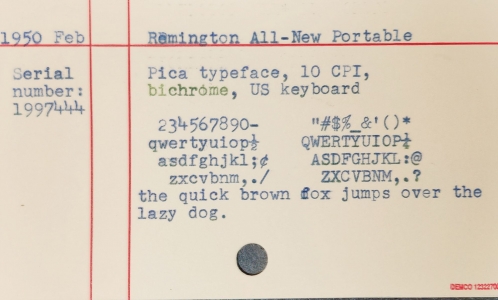
Links:
- variable line spacer surgery
- Acquisition: 1950 Remington All-New Portable Typewriter
- Sound of the Remington All-New platen, typing, bell, and return
Photos:
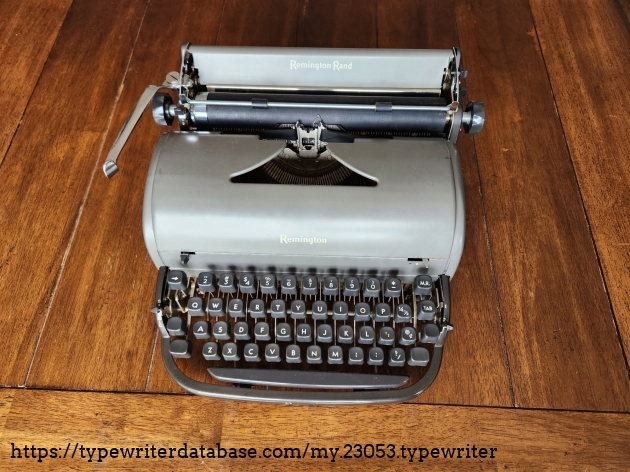
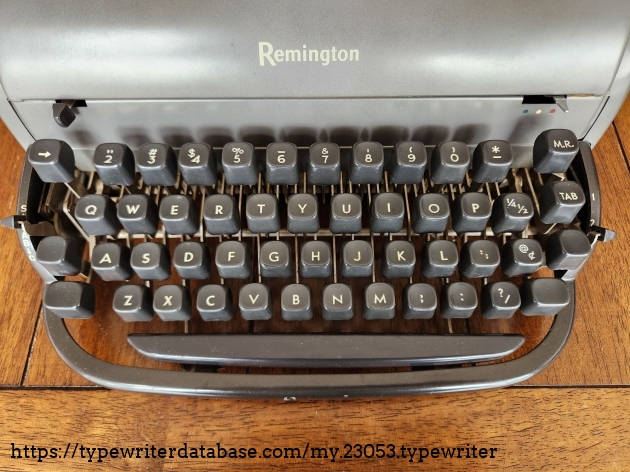
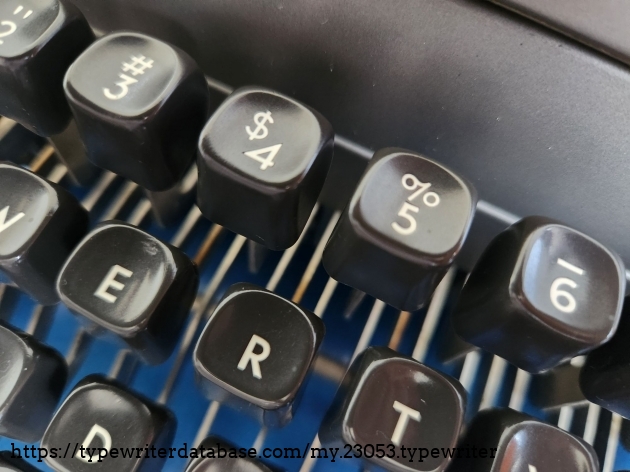
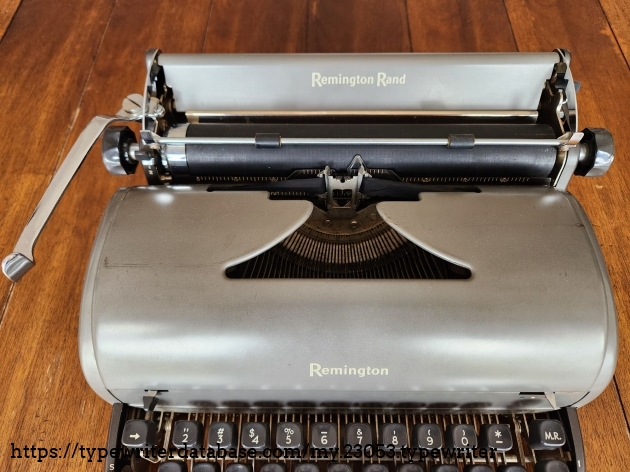
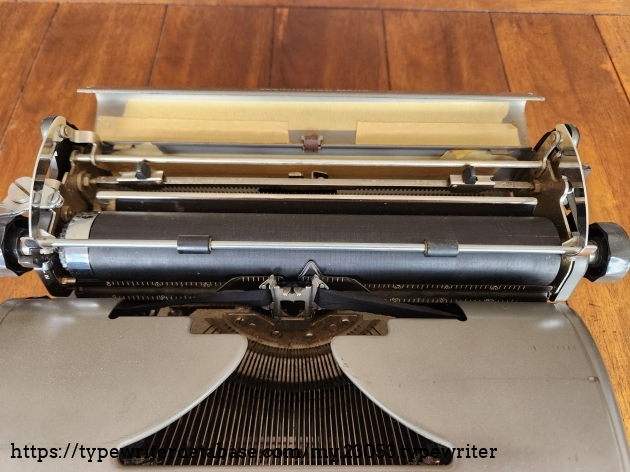
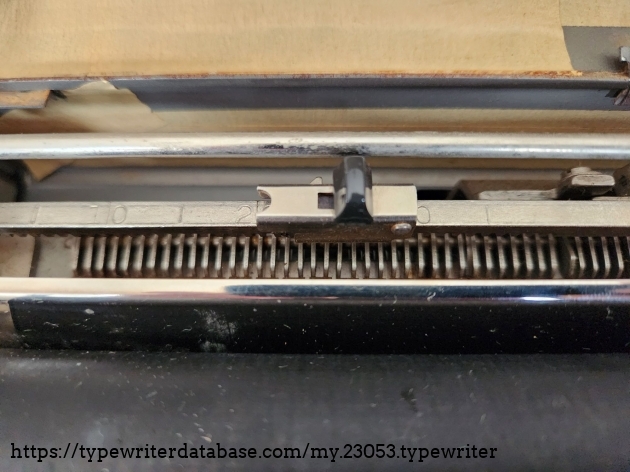
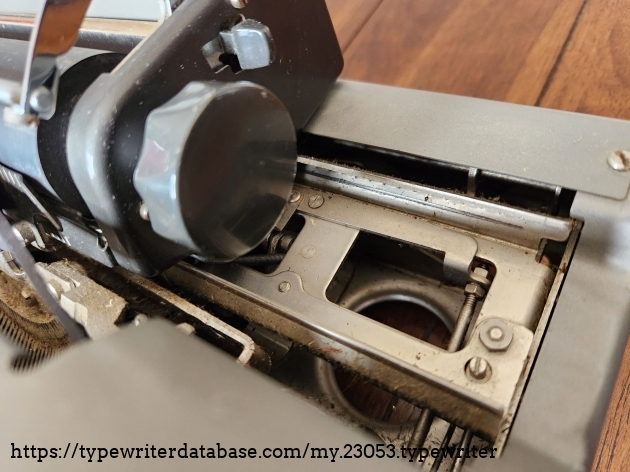
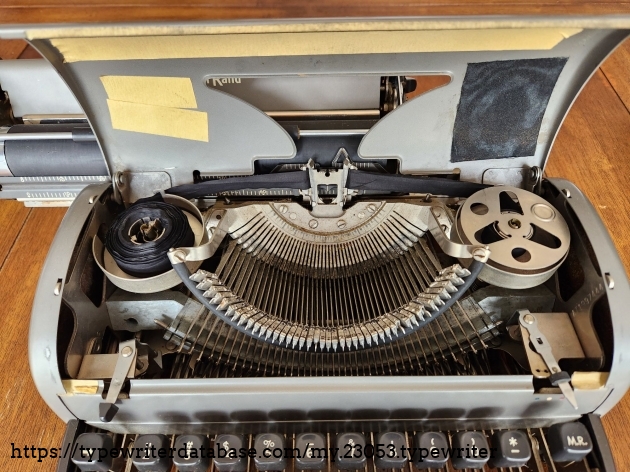
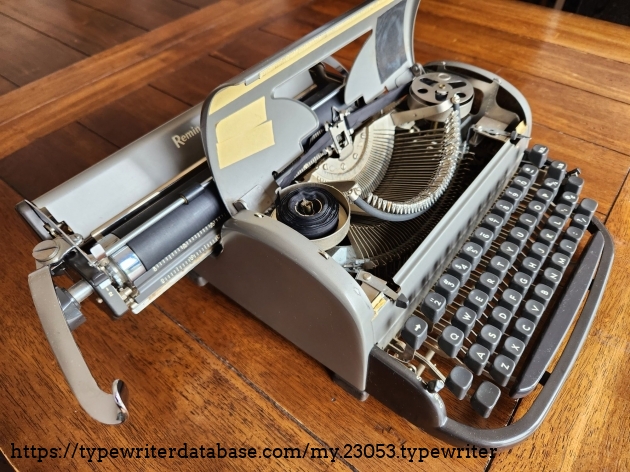
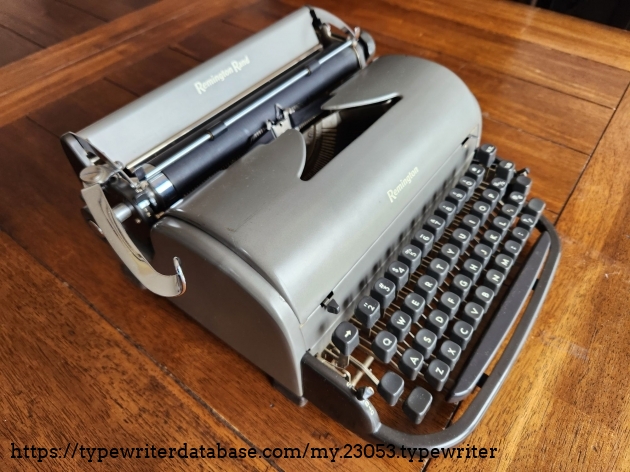
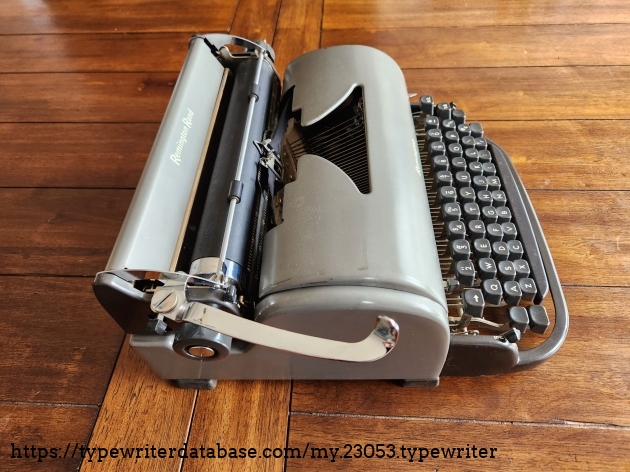
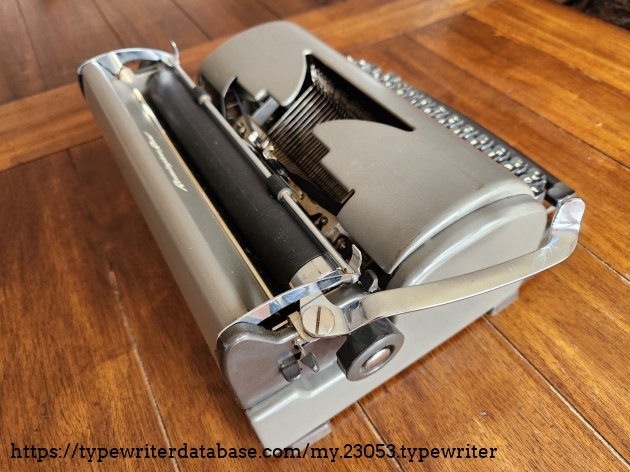
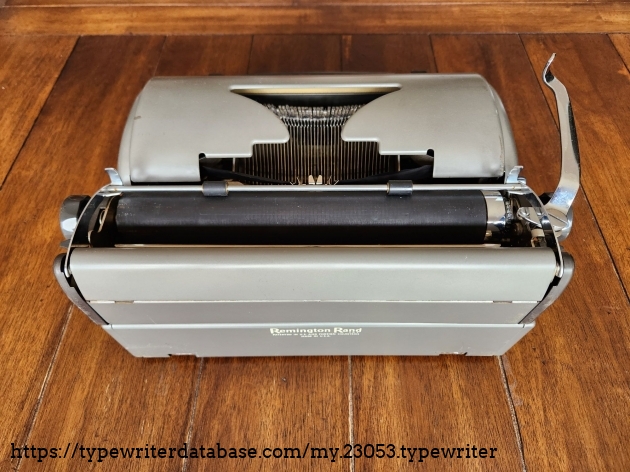
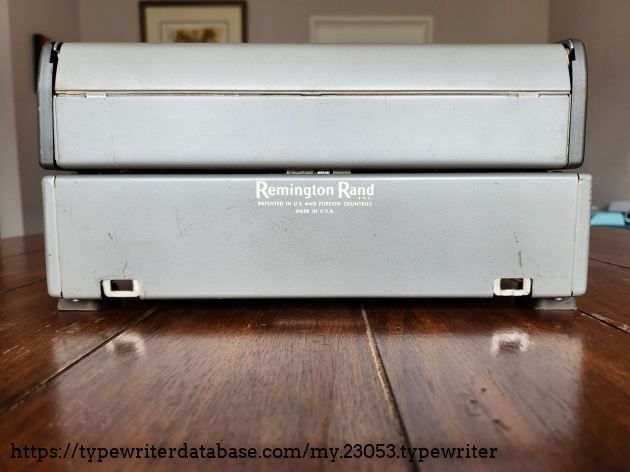
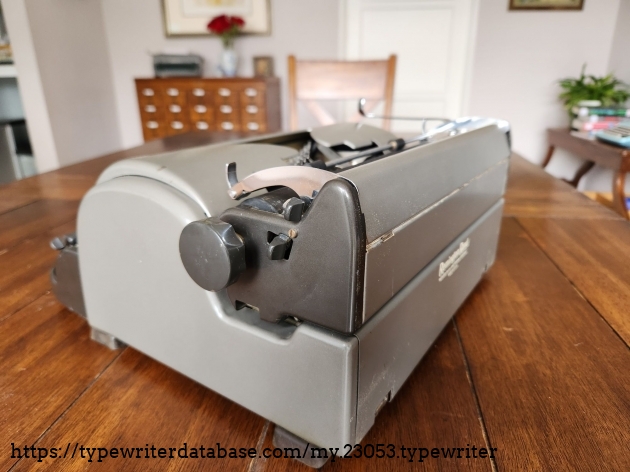
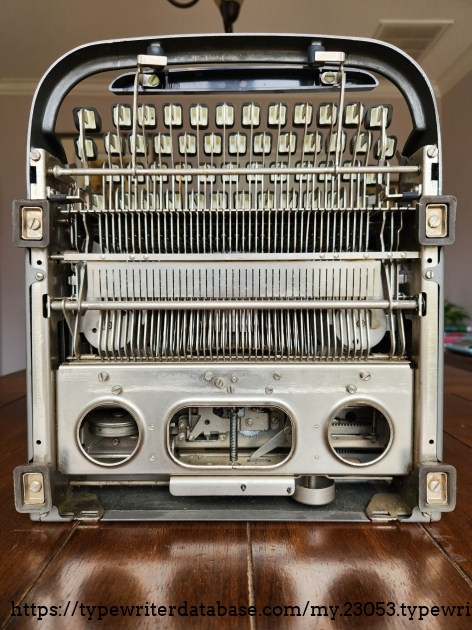
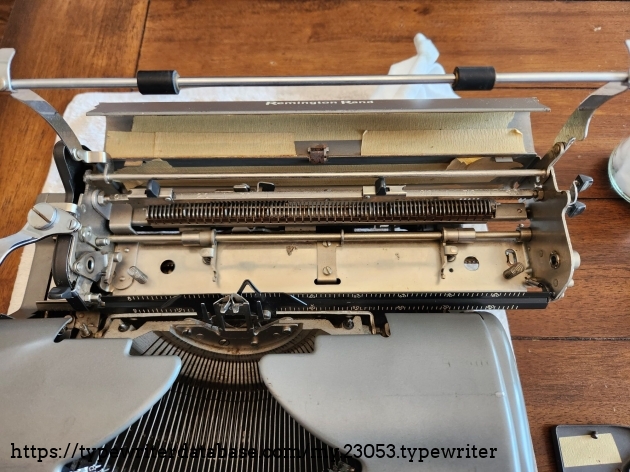
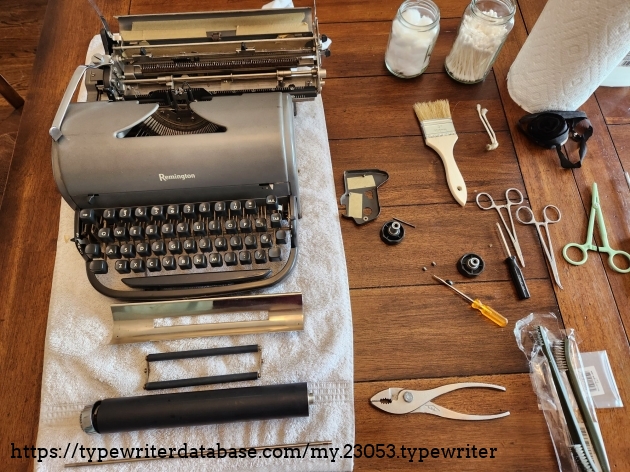
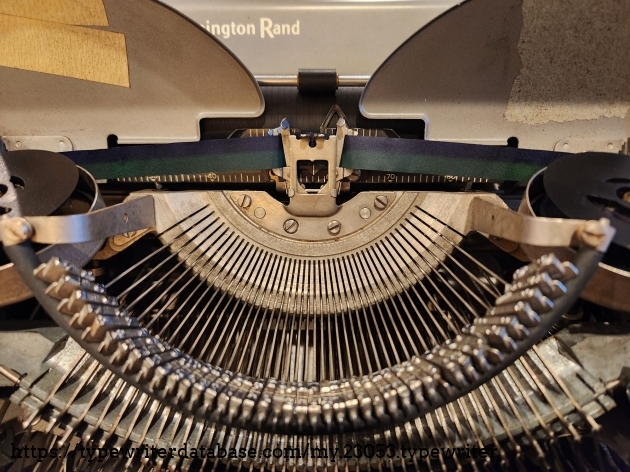
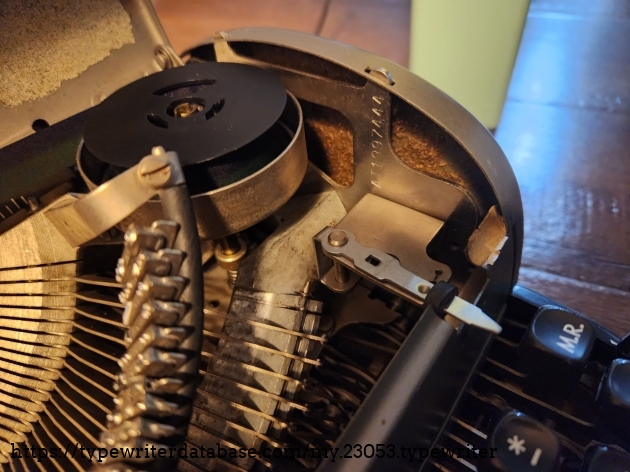
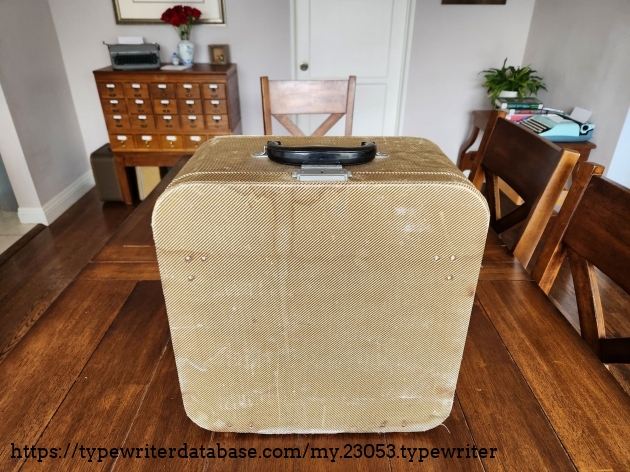
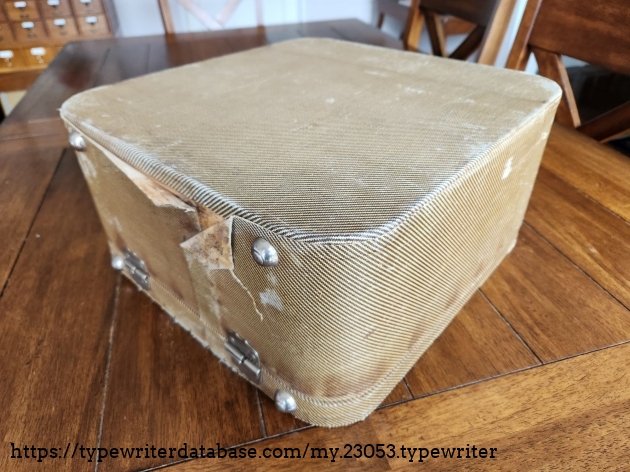
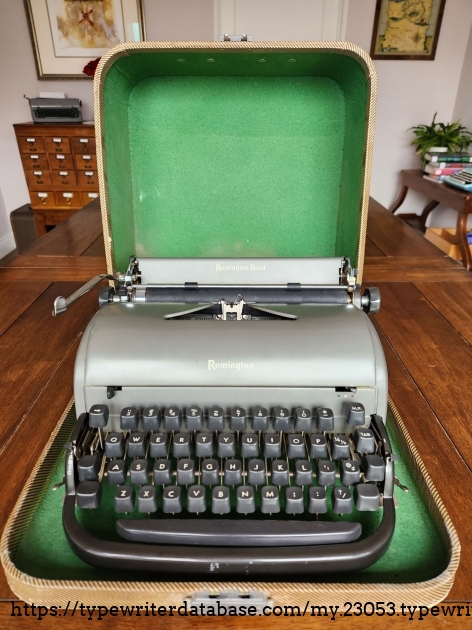
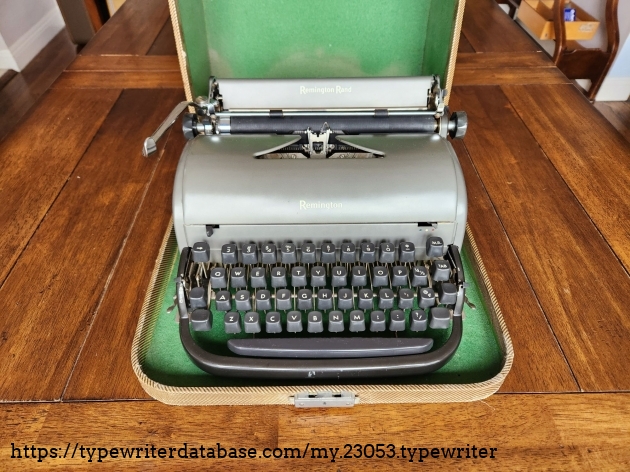
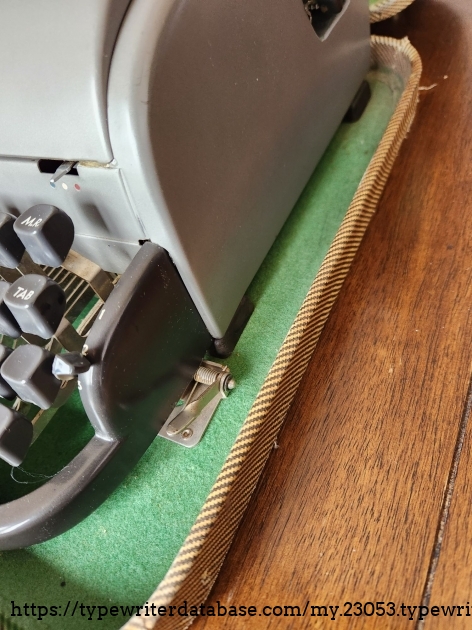
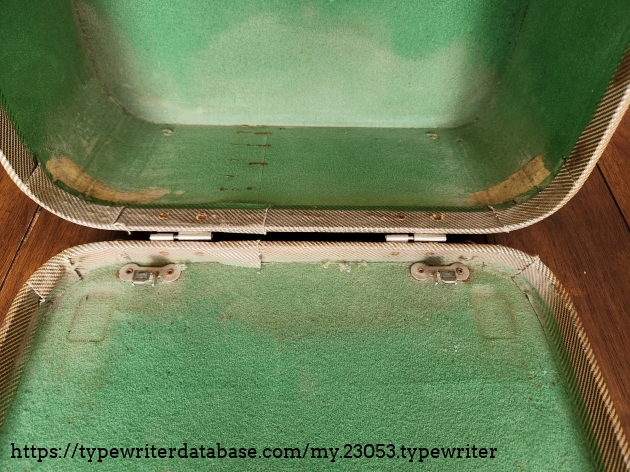
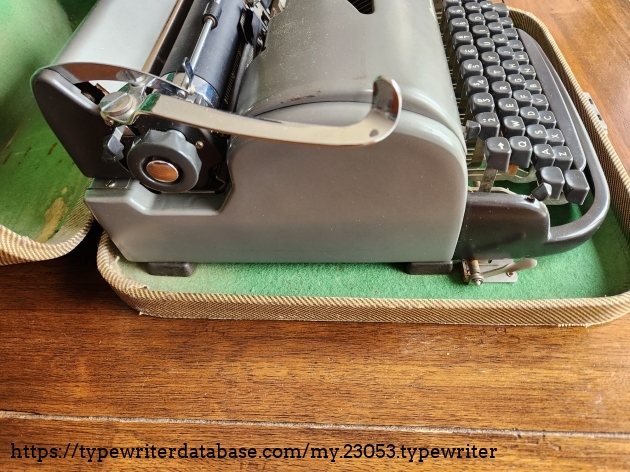
Hunter: Chris Aldrich (chrisaldrich)
Chris Aldrich's Typewriter Galleries [ My Collection ] [ My Sightings ]

Status: Typewriter Hunter
Points: 1277
Hello! I’m a Johns Hopkins trained biomedical and electrical engineer with a variety of interests in the entertainment industry, information theory, evolution, big history, genetics, signal processing, transgenetics, translational medicine, and theoretical mathematics. I’m a strong advocate of the IndieWeb movement.
I have a love for analog office equipment including library card catalogs and typewriters. As of March 2025, I've got a segment of 45 typewriters, mostly portable and manual models along with several Royal standards, a Remington Standard, and one SMC typebar electric. I have been learning how to completely overhaul all of the machines in my collection, all of which work well aside from one or two machines which need some parts. I have a burgeoning collection of typewriter tools for continually repairing, maintaining, and upgrading my machines.
2024 was broadly a year of collecting portables and 2025 seems to be shaping up to be the year of the standards. I'm slowly morphing my TWdB collection photos so that the "hero" photos of the machine facing to the right (with the left side of the typewriter facing front generally with the carriage return in the front) are those that have been generally cleaned /restored while those facing to the left (with the right side of the typewriter facing front with carriage return in the rear) are those that still need cleaning, oiling, adjustment or a major repair. Those facing forward generally need work as well. Certainly some don't fit this pattern, but I hope to fix them all shortly as I get the requisite photos.
I've got more than half a dozen card catalogs including a Gaylord Bros. and a Steelcase along with several Remington Rand and some Shaw-Walkers. I've lost count of my index card collection once I passed 10,000.
RESEARCH NOTE: When researching the Remington All-New on a computer with lots of screen real estate, you may find that launching the Remington Serial Number page and the Remington All-New By Model/Year/Serial page in new browser windows can give you interesting perspectives on changes throughout the model series.
